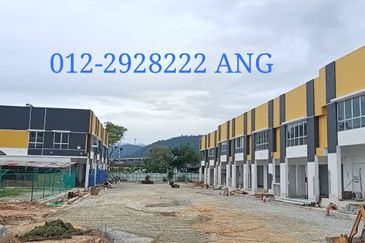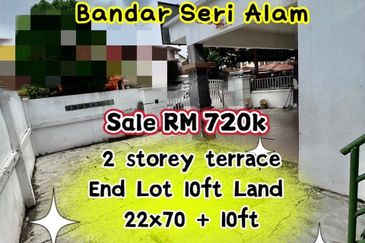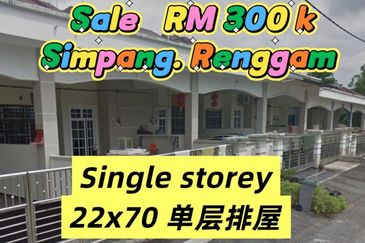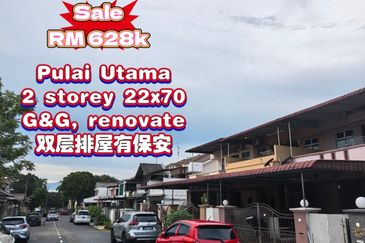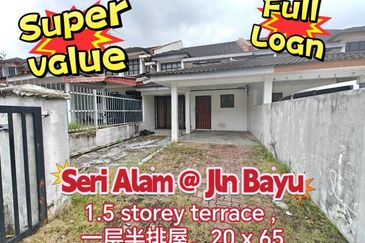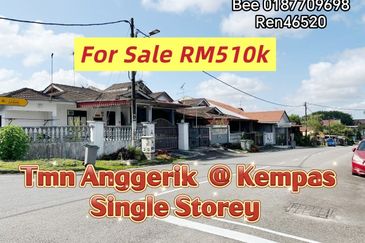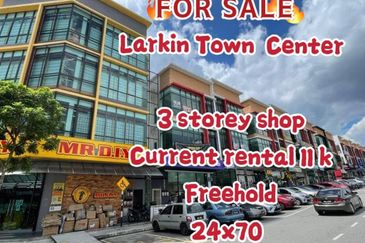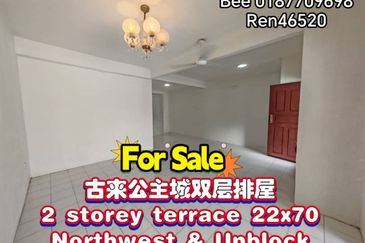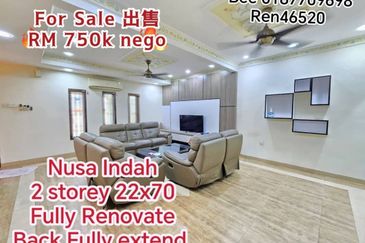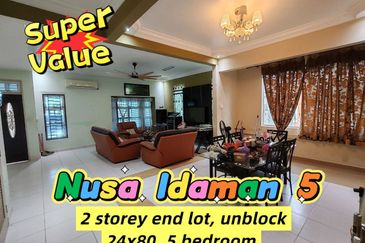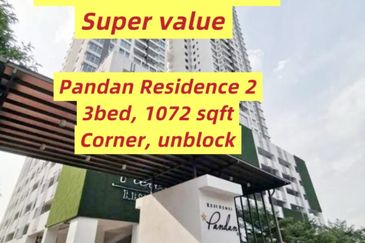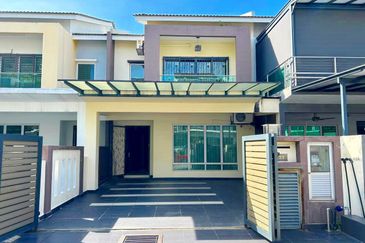
ANTHONY LEE TEE
Architect Centre Sdn Bhd, accredited architect and trainer
What are the chances of a fire incident occuring at a high-rise residential building compared with a mixed development (residences atop a commercial podium)?
If poorly managed, all types of properties are at risk due to faulty fire protection and fire-fighting equipment, obstructions in staircases and defective fire doors, which render them unsafe.
The fire risk for high-rise residences built on top of commercial blocks is obviously higher due to the density, nature of activities and proximity. However, a well-managed mixed development with good standard operating procedures (SOPs) in place would be able to prevent — and if necessary, respond quickly and adequately to — a fire incident.
The provisions found in the Uniform Building By-laws (UBBL) and Fire Services Act impose far more stringent conditions for these types of properties. We have well-defined by-laws that stipulate the design and construction of residential and mixed developments. The UBBL dedicates the largest portion of its by-laws towards fire requirements for fire-resistant materials, early detection and alarm, safe evacuation, containment of smoke or fire, and installation of fire fighting equipment, among others.
What should residents be aware of when living in these properties?
Residents and owners should be well aware that high-rise stratified properties mean “communal living” extending beyond their own unit and car park.
They should participate actively and harmoniously in their respective joint management bodies (JMBs) or management corporations (MCs) to become aware of and resolve issues related to “their own” common property.
They should understand the various systems constructed into their property, such as fire doors, pumps, pipes, fans, electrical boards, lift motor rooms, control panels and emergency backup systems, must be operated and maintained properly and regularly. These systems have prescribed service intervals and life spans, and are interconnected with one another to ensure that the property is kept operationally safe as intended. Residents should be aware that it is more costly to carry out repairs or replacements after a system has broken down than the spending on regular maintenance.
A simple analogy is: “Avoid engine damage, change your engine oil and filter every 10,000km. For optimal performance, inspect and service your car regularly.”
Before embarking on ad-hoc repairs, common property should be professionally inspected to establish condition, prioritise urgent issues related to safety, and then implement maintenance, repair and replacement methodically.
* Urgent need to spread fire-safety knowledge
* Is your building a death trap?
* Are we living dangerously?
* The cost of fires
* Steps to keep our homes safe from fire
* Electricity — friend or foe?
* Concerns over enforcement on fire safety regulations
I’m currently staying in a 2-storey link house and I would like to enhance the fire security of my home. What can I do?
Here is a (non-exhaustive) list of things property owners can do:
1. Remove obstruction at the ground floor (back and front doors). Metal grilles at the back door can be a fire trap.
2. All metal grilles in the house (upstairs and downstairs) to be built in accordance with the Bomba guidelines for safe evacuation.
3. Practical housekeeping — do not store flammable materials, fuel or items that can burn easily. Even a burning stack of old newspapers or old cardboard boxes can be difficult to extinguish.
5. Install a smoke or fire alarm above the staircase and test the unit regularly.
6. Buy at least two units of ABC fire extinguishers (6kg) and place one in the kitchen and another in the hall upstairs, on a wall where it is easily seen.
7. Engage a proper qualified electrician to check all the wiring and installation. Check that the residual current device is correctly rated in compliance with the
Energy Commission’s requirement. If the house has frequent outages, check the root cause.
8. Understand the sources of fires, such as handphone chargers, prayer altar lights or electrical appliances that are left on standby mode. Always switch them off at night. Use only SIRIM-approved appliances. Water leaks can cause electrical fires, so fix all water leakages.

LOW HON KEONG
Henry Butcher (Mont Kiara) Sdn Bhd, executive director
Once the JMB or MC takes over a project from the developer, what kind of tests on the fire safety system does the JMB have to perform?
Carry out a joint inspection at the main control room with the developer and property manager. That’s the heart of the building where almost all of the fire-fighting equipment is placed. Besides that, testing must also be conducted at all fire-fighting pump rooms.
If the owner/developer of the commercial car park that adjoins our residential condominium agrees to shut down the car park and block car entries into the car park, can the JMB lock the fire door at the car park?
Every fire door needs to be UNLOCKED at all times. Should the JMB wish to lock the door, electromagnetic locks must be installed and Bomba’s approval is required.
Another alternative is install one-way access doors where they can only be accessed from the lobby or ground floor to the staircase (access from the staircase to the lobby will not be possible). Any residents exiting their floor via the staircase will not be able to access any other floor except the ground floor.
What is the recommended frequency to service fire systems in a residential condominium?
Monthly basis — no compromise!
How would you suggest building managers draw residents to participate in fire drills?
Organise a tour-based fire drill; visit authorised areas such as the fire control room or pump rooms within the building where owners don’t really have the chance to see before. Collaborate with Bomba and suggest a demonstration involving the fire engine.

NUR FAIDARINA ALIAS
Energy Commission of Malaysia Department of Regulatory Electrical Safety, Equipment Unit regulatory officer
I am currently renting a unit that has faulty installation. I contacted my landlord but they told me not to worry about it. What should I do?
Write an official letter to your landlord to inform them of the matter. Subsequently, if there is no action from the landlord, you may file a complaint to the Energy Commission at www.st.gov.my under the “e-Aduan” section.
How often should I get my home electrical wiring checked and where should I look for certified electricians?
Currently, there are no requirements for the checking of domestic electrical wiring. However, residents are advised to check their own house wiring. Residual current devices should be tested at least every six months to ensure its proper operation. The test shall be carried out in accordance to the
Electricity Supply Act 1990 and Electricity Regulations 1994, and based on the recommendation of the manufacturers and/or good maintenance practice.
To look for certified electricians and contractors, please refer to the Energy Commission’s website.
Is there a schedule of fees that certified electricians need to adhere to?
Please refer to the Energy Commission’s website for the full list of contractors with their respective fees.

CHONG LEE SIONG
LeeSiong Architect, principal architect
There must be a party wall between two premises, but does it apply to commercial properties? In case the business intends to expand to the space next door, is it okay to break down the party wall? Is there a need to install a fire door?
This is subject to planning and building plans approval from the local authority including the planning department, building department, premise licensing, the Fire and Rescue Department and associated departments related to the type of business. Approval, if granted, will usually include an undertaking to re-instate the wall upon the termination of the tenancy or ceasing of the business.
As for the fire door installation, it depends on the type of occupancy and the relevant compartment limits (floor area and/or volume) as prescribed in the UBBL.
How often should we service the fire systems of a condominium?
Fire safety systems should be inspected and serviced at least once a year. Every six months is preferable, and a monthly test run of the water pumps and alarm is highly recommended. You could seek qualified fire services contractors to provide these inspection services.
Fire hose reels should be readily accessible during fires. However, the vandalism rate at our premise is high and that results in unauthorised use and even missing hoses. Can we tie or lock the hoses to its casings?
For fire safety reason, please avoid doing any modifications to fire safety equipment. If needed, the JMB or MC should consider installing Bomba-approved lockable cabinets with break glass keys for the fire safety equipment.
My terraced house was built 30 years ago. Is there any way to check whether it was made from fire-rated material? If the party wall is not made by fire-resistant material, should I change it and will it be very costly?
A conventional claybrick wall which is 200mm thick with plaster on both sides is deemed to satisfy the fire rating requirements of a party wall. If possible, you may get up into the ceiling space and check if the wall is fully constructed to project beyond the roof.
Should I keep a fire blanket at home?
Yes, most certainly — do keep at least one close at hand near the kitchen. But a portable fire extinguisher (ABC dry powder type) is more essential for every home.
I am staying in an old 5-storey walk-up apartment and there’s only one staircase for 20 units. Is this sufficient for evacuation purpose in case of emergency? What should we do to improve the fire safety of the building?
The current UBBL prescribes a minimum of two exit stairs for every floor, with the exception of shophouses/shopoffices where the top-most floor does not exceed 12m in height from the ground. You may seek the services of professionals to do an inspection or audit on your premises and make recommendations on the building’s fire safety.

HAMDAN ALI
Fire and Rescue Department Malaysia Fire Safety Division, assistant commissioner
There must be a party wall between two premises, but does it apply to commercial properties? In case the business intends to expand to the space next door, is it okay to break down the party wall? Is there a need to install a fire door?
For your information, if the owner plans to expand his or her business with same usage of the building, the party wall can be demolished. However, all the other passive and active fire-safety requirements need to be considered since the area has been expanded. The need for a fire door depends on the usage of the units by owners.
Fire hose reels should be readily accessible during fires. However, the vandalism rate at our premise is high and that results in unauthorised use and even missing hoses. Can we tie or lock the hoses to its casings?
We admit that the number of vandalism cases is increasing. However, the fire hose is generally used by the public during an emergency. There are many ways to prevent vandalism such as installing a closed-circuit TV or to have a break glass key box.
Can I use fire-extinguishing ball products to replace the traditional fire extinguishers?
A fire-extinguishing ball product cannot be used to replace the fire extinguisher, but can be used as an additional fire-fighting equipment.
This story first appeared in EdgeProp.my pullout on Oct 20, 2017. Download EdgeProp.my pullout here for free.
TOP PICKS BY EDGEPROP
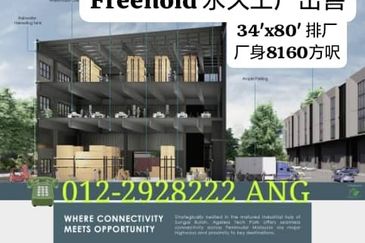
Bandar Baru Sungai Buloh
Sungai Buloh, Selangor
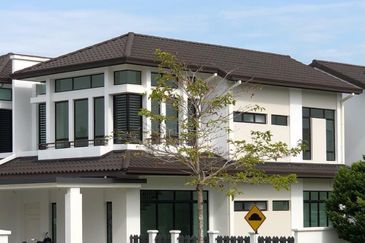
Tenderfields @ Eco Majestic
Semenyih, Selangor
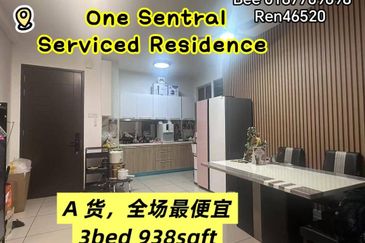
One Sentral Serviced Residence
Iskandar Puteri (Nusajaya), Johor
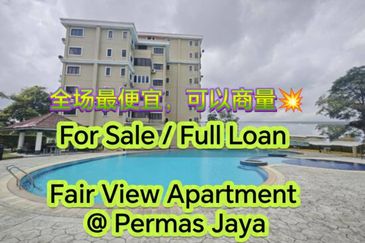
Fair View, Bandar Baru Permas Jaya
Permas Jaya/Senibong, Johor

Imperial Jade Residenz @ Bandar Seri Alam
Masai, Johor
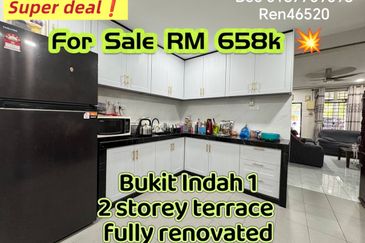
Taman Bukit Indah @ Iskandar Puteri
Johor Bahru, Johor


